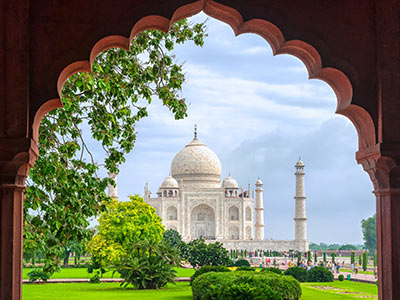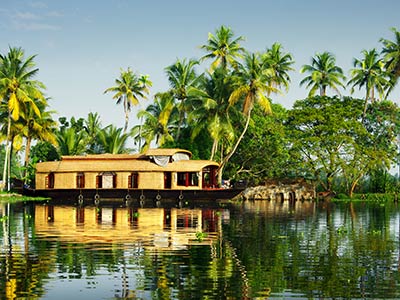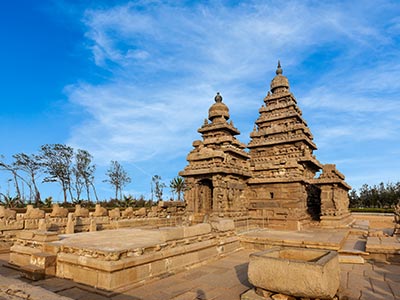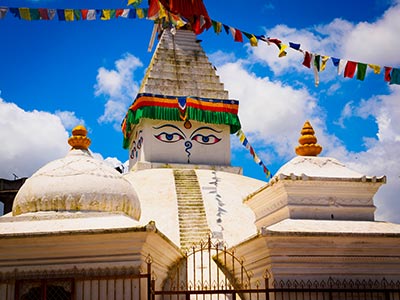

Sikkim, the tiny treasure trove of north eastern India oozes the biggest charms ever. Cuddling immense natural beauty, the state creates a magic that lingers on the mind of travellers visiting here forever. With snow blanketed peaks, foaming lakes, snaky roads nestling with Dendrobium Nobile (official flower of Sikkim) and snowy clouds whispering some beautiful fairytales - Sikkim is a dream destination.
Sikkim is home to three ethnic groups, including Lepcha, Bhutia and Nepali. The multiculturalism of Sikkim is exemplified in the sights of Hindu temples rubbing shoulders with Buddhist Monasteries, Churches, Mosque and Gurudwara. The lifestyle of the locals is extremely simple. Nepali is the most spoken language in state. However, English is also frequently used and understood by the locals.
Folk dances and songs are integral part of Sikkimese culture. Most of the songs are about natural surroundings. Some of the popular dance forms of the state include Lu Khangthamo, Rechungma, Maruni and Tamang Selo. Mask dance is the most popular dance form of Sikkim performed during various auspicious festivals.
Sikkim is home to abundance of natural vitas. The state is a beguiler with green landscapes stretching in all the directions. Tsomgo Lake is the most picturesque lake of the state located just 38 km away from Gangtok. The lake is perfect to spot migratory ducks like the Brahmini, and beautiful flowers such as Primulas, Blue and Yellow Poppies and Irish. The historic town of Yuksom also remains popular among travellers seeking peace. Apart from this, Lachung, Lachen and Yumthang Valley are incredible destinations to unwind in the lap of nature. Nature lovers planning holidays to Sikkim never miss a chance to explore Namchi blessed with aroma of beautiful tea gardens.
Gangtok, the capital city of Sikkim is a gem to eye the most remarkable facades of nature. The city is home to never ending walking trails nestling with emerald landscapes which make it a blessing for nature lovers.
Thanks to the diverse geographic arrangement, Sikkim presents a range of adventure activities. From hang gliding to kayaking and canoeing to mountain biking, rafting and trekking, adventure freaks can gratify their hunger for some serious escapade here. Jorethan in the western region is perfect to indulge in hang gliding. Kayaking on the river Teesta also bestows a memorable experience. Those who wish to partake in biking through the rugged mountains, foaming lakes and lush green forests must take some popular biking routes, including Gangtok - Jorethang, Gangtok - Phodong - Rangrang - Dikchu - Makha - Sirwani - Temi, Gangtok - Rumtek - Sang - Sirwani - Temi - Namchi - Jorthang - Melli, Gangtok - Rumtek - Sang - Sirwani - Temi - Namchi - Namthang - Rangpo. Mountaineering enthusiasts can visit Frey’s Peak, Jopuno, Tinchenkhang, Byrmkhangse and Lamo Angden.
Sikkim is also a heaven for trekking enthusiasts. The Yuksom- Dzongri Trek, located at an altitude of 4200 meters, is highly popular among veteran explorers. Apart from this, rafting on the clear waters of the Teesta River gives immense pleasure.
There is no dearth of wildlife in Sikkim. The dense forests of Sikkim are home to a variety of fauna and flora. The barking deer is the most common animal here. Red Panda can also be spotted on the treetops. The avifauna of Sikkim consists of 30% of the total birds residing in the Indian subcontinent. Some of the prominent species of birds that add colours to the backdrop of Sikkim are Impeyan Pheasant, Crimson Horned Pheasant, Snow Partridge, Snow Cock, Lammergeyer, Griffon Vultures, Golden Eagles, Quail, Plovers, Woodcock and Sandpipers.
Wildlife enthusiasts must visit the Fambong Lho Wildlife Sanctuary spread across 5176 sq kms. The Sanctuary is best to spot red pandas, leopards, civet cats and the Himalayan black bear. Kangchendzonga National Park is another highly visited wildlife destination in Sikkim that is home to Himalayan black bear, snow leopard, wild ass, Tibetan antelope and barking deer. Those who wish to eye primroses, rhododendrons, wild flowers and poppies must visit the Kyongnosla Alpine Sanctuary. Apart from this, the Maenam Wildlife Sanctuary is another sure to lure treat that charms travellers with its lush forest areas where leopard, red panda, civet cat and black eagle dwell peacefully.
Sikkim is a captivating destination where spirituality mingles with serenity. From Buddhist monasteries to Char Dham, Sikkim lures human souls with its rich culture and heritage. The Solophok Chardham, featuring an 87 feet long statue of Lord Shiva, is a popular religious hub among Hindus. Samdruptse, featuring a 135 feet high statue of Guru Padamasambhava, also brings loads of travellers. Sikkim is world renowned for its monasteries that let you meditate to achieve nirvana. Visit monasteries like Sanga Choeling Monastery, Pemayantse Monastery, Dubdi Monastery and Phensang Monastery to unveil the local cultures and beliefs of the people of Sikkim in their religion.
Sikkim is quite known for its handicrafts, including furniture, tribal woven bags, beautifully designed carpets and durries and wooden and bamboo artefacts. Every market here remains decked up with souvenirs that will remind you about your trip to this beautiful destination forever. Old Market, New Market and Lal Market are some of the most popular markets that are visited by travellers and locals alike. One can also explore government handicraft and handloom emporia to bag some locally made carpets, masks, silk "tankha" paintings, Buddhist prayer wheels and vivid Choktse tables.
Sikkimese food features a mix of Tibetan, Nepalese and Indian influences. Rice and maize are the staples of the region. The locals eat fresh vegetable, bamboo shoots, wild flowers, mushrooms, nettle leaves and fish in abundance. Gyakho is a popular traditional soup cooked in every household during festivals. Sikkimese momos (a kind of steamed dumplings) and thukpa (a watery soup with noodles) also remain popular among travellers and locals alike. In addition to this, chaang (fermented rice wine) and tomba (beer made of fermented millet) served in wooden or bamboo mug are must try in Sikkim.
The beautiful thumb-shaped state of Sikkim celebrates a number of fairs and festivals which underline the fervour of the locals towards their traditions. The Tibetan New Year, Losar festival is a harvest festival of the state in which locals visit monastery and perform various rituals. International Flower Festival adds vibrant colours to the emerald landscape of Sikkim where various species of flowers are showcased.
Saga Dawa, an auspicious event for Mahayana Buddhists, is also celebrated with great fervour where devotees visit monasteries to offer butter lamps to the deity. Apart from this, Dasain is another big festival of the state that symbolizes the victory of good over evil. To experience the local dance forms and cultures closely, the Pang Lhabsol is a charmer.
The best time to visit Sikkim is between March and May when the state remains blanketed with multi-colour flowers. Months between October and mid-December also entice travellers as it is the best time to capture some jaw dropping vistas of the Himalayan peaks. Travelling to Sikkim can be different between June and September as the state experiences heavy rainfall leading to landslides. Also, January and February bring snow in the higher altitudes, making commuting impossible for the holidaymakers.
Sikkim is not linked with rest of the world by air. The closest airport that travellers can access is at Bagdogra in West Bengal. From there, travellers can take 124 km taxi drive to Gangtok which usually takes 5 hours. Those who wish to relish panoramic view can hop on the helicopter that flies between Gangtok - Bagdogra - Gangtok.
Being a mountainous state, Sikkim doesn’t have a rail network. The nearest railhead, New Jalpaiguri (West Bengal), is 125km away from Gangtok.
Also, travellers can take the pleasure of a 114 km drive to Gangtok from Siliguri (West Bengal). Gangtok is also connected with Darjeeling via road. One can find taxis, buses and hired cars in abundance to reach Sikkim with ease.
The best way to unveil the charms of Sikkim is by taking a road journey. Jeeps and private cars are available all over the state. It is advised to hire a local driver as sometimes it becomes difficult to drive through baffling roads of the state. Local buses also connect towns and cities in Sikkim; however, most of the visitors prefer hiring their own private vehicle.
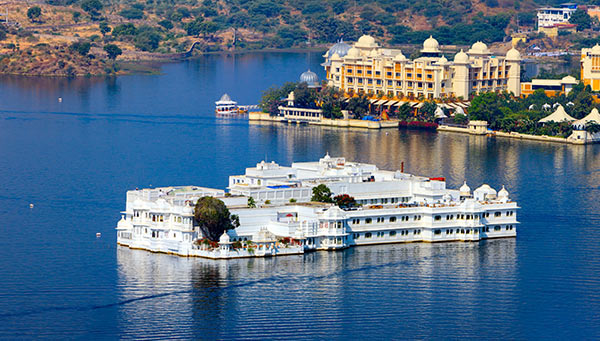
Our team is 24/7 at your service to help you with your booking issues or answer any related questions
+1 786 396 4200
